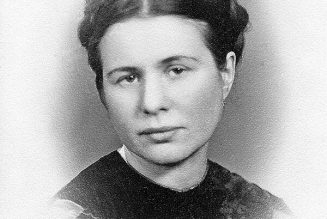, February 27, 2020
 This Sunday’s readings tell the story of two different temptations: Adam and Eve’s on the one hand and Christ’s on the other. The temptations have remarkable similarities to each other — and to what you and I face this Lent.
This Sunday’s readings tell the story of two different temptations: Adam and Eve’s on the one hand and Christ’s on the other. The temptations have remarkable similarities to each other — and to what you and I face this Lent.
The Church chose readings for the First Sunday of Lent, Year A, to prepare us to face an enemy who is relentless and cunning.
First, the devil tempts our appetites. We win by fasting with Christ.
The devil’s first instinct in both the Garden of Eden and the desert of Judea is to tempt with food. With Adam and Eve, he tempts people in a land of plenty with a forbidden fruit; with Jesus, he uses simple loaves of bread to tempt someone in extreme hunger. In both cases, the devil hopes that his victims will choose with their stomachs instead of their minds and hearts.
Eve’s fatal act comes from following their appetites. She sees that the fruit is “good for food” and “pleasing to the eyes” and decides to reject what the Father has told her. Christ’s saving act is to cling to the words of the Father despite his hunger. “One does not live on bread alone, but on every word that comes forth from the mouth of God,” he says. Later he will say, “My food is to do the will of my Father.”
Our temptations often come through our appetites also. We do not reject morning prayer so much as we reject waking up. We do not decide to waste time so much as we get distracted by what is “pleasing to the eyes” — things to buy, watch, or scroll through on our phones. We do not embrace the devil, we merely look away from God toward what Satan prefers we look at.
This is why fasting is so important. It trains you in mastery over your appetites so that you do not give in so easily.
Second, the devil subtly changes our attitude toward God. (So pray!)
The second movement of Satan’s strategy is to darken his victims’ opinion of God. Adam and Eve owe God everything; but more than that, he has made them stewards of paradise — “co-creators” through their work.
Nonetheless, Eve is quick to question God’s benevolence. When Satan asks: “Did God really tell you not to eat from any of the trees in the garden?” Eve should answer: “Certainly not. They are all ours to eat, except one.”
Instead, she mimics Satan’s attitude, and claims God said of the tree of good and evil: “You shall not eat it or even touch it, lest you die.” God never said not to touch it. But Eve has started to make God the bad guy in her mind.
The devil does much the same thing with Christ when he takes him to “the parapet of the temple” and says “If you are the Son of God, throw yourself down,” because surely God will not let his son get hurt. Jesus refuses to evaluate God on any terms but God’s own, saying, “It is written: You shall not put the Lord, your God, to the test.”
We also find ourselves testing God when we are tempted. Like a child who has been told not to do something he really wants to do, we play games with God, dancing on a legalistic line and daring him to call our foul. As soon as we do that, we are no longer dealing with God as a friend; we have made him our opponent.
The only way to change this rebellious attitude is to shore up our friendship. This is what prayer does: By spending time with him, we get to know him and internalize his will.
Third, the devil knows Adam and Eve want everything they can get. He gambles that Jesus — and you and I — do too. (So, give alms.)
In the coup de grace of his temptation, Satan tells Adam and Eve that they will gain the world if they eat the fruit. In their case, he means they will get spiritual goods: “Your eyes will be opened and you will be like gods who know what is good and what is evil.”
In fact, what happens to Adam and Eve is what St. Paul describes: “Through one man sin entered the world, and through sin, death, and thus death came to all men, inasmuch as all sinned.” Sin and death took the form of “triple concupiscence,” the Catechism explains, which “subjugates him to the pleasures of the senses, covetousness for earthly goods and self-assertion, contrary to the dictates of reason.”
After the Fall, Adam and Eve suffered what we do: a constant desire to have it all. We want pleasure — all the time. We want more possessions. We want power.
Satan comes directly at Christ with the same temptation, offering him all the kingdoms of the world, but now much more willing to admit that this will mean bowing down to Satan in worship. Jesus shoos him away.
The same cycle repeats itself in our lives. We want it all, and go for it — only to find that we are in a position of subjugation that we hate. The remedy is almsgiving: To give away anything we can in order to detach ourselves from everything we have.
You can judge the success of your Lent by how well it prepares you to reject Satan.
“Do you reject Satan? And all his works? And all his empty promises?” Before you can answer “I do” with words at Easter, you have to answer “I do” with actions in Lent. You do it by fasting honestly, praying deeply, and giving generously.
But you do not have to do it alone. “For if, by the transgression of the one, death came to reign through that one,” says St. Paul, “how much more will those who receive the abundance of grace and of the gift of justification come to reign in life through the one Jesus Christ.”
Fast with him, pray with him and give generously for him, and he will see you through the battle.
Tags: First Sunday of Lent Year A, prayer, Sunday Gospel, Sunday Readings
Never miss a post! Subscribe below to our weekly newsletter.


![Deviance, harassment, fraud: Satanic Temple rocked by accusations, lawsuit [language warning]…](https://salvationprosperity.net/wp-content/uploads/2021/11/deviance-harassment-fraud-satanic-temple-rocked-by-accusations-lawsuit-language-warning-327x219.jpg)






